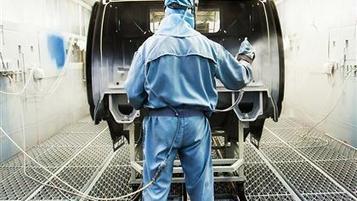Nov 27 2014
Setup Reduction Methodology | Alejandro Sibaja
“We may think, based in all the information about Lean Manufacturing, that many tools and methods are well understood, unfortunately on real live there is many misunderstanding about them, that’s why I decided to write this article, for one of the most popular and known tool, SMED.”
Source: alexsibaja.blogspot.mx
It’s good to see that not everyone has forgotten SMED or is taking it for granted. When you bring it up with manufacturing managers nowadays, they often respond with “Oh yeah, we had some consultants show us how to do this three years ago.”
“And how long do you take to set up this machine today?”
“I am not sure. Maybe 90 minutes…”
They think SMED is yesterday’s news, but they are not doing it, and they are often confused about its purpose. They think it is to increase machine utilization, as opposed to flexibillity.
Sibaja’s article is a valuable introduction to the subject. I would have called it “Setup Time Reduction” rather than “Setup Reduction,” which might imply that you are making fewer setups, or spending less time on setups overall. It’s not what SMED lets you do. Instead, your total setup time budget remains the same, but you are using it to make more setups and produce smaller lots of more different products.
I would also have put more emphasis on the use of video recordings in analyzing setup processes. You don’t just show up on the shop floor with a camera; instead, you have to prepare the ground carefully, secure the consent of the participants upfront, and know how to use the camera to capture the relevant details.
Sibaja’s last sentence is about using the information “in your next Kaizen Event,” which implies that Kaizen events are an appropriate method to manage SMED projects. It is not my experience. You might kick start a SMED project with a Kaizen Event, but not to finish it. Often, to achieve quick setups, you have to make changes to the machine and the tooling that require patient work over time. Standardizing the dimensions of 300 dies, for example, may take a year of incremental progress.
See on Scoop.it – lean manufacturing





Jul 9 2015
Theories of Lean and Leveling/Heijunka| Christoph Roser
Share this:
Like this:
By Michel Baudin • Blog clippings 9 • Tags: Bullwhip Effect, EPEI, Heijunka, Lean, One-piece flow, Production planning, SMED, Toyota, TPS